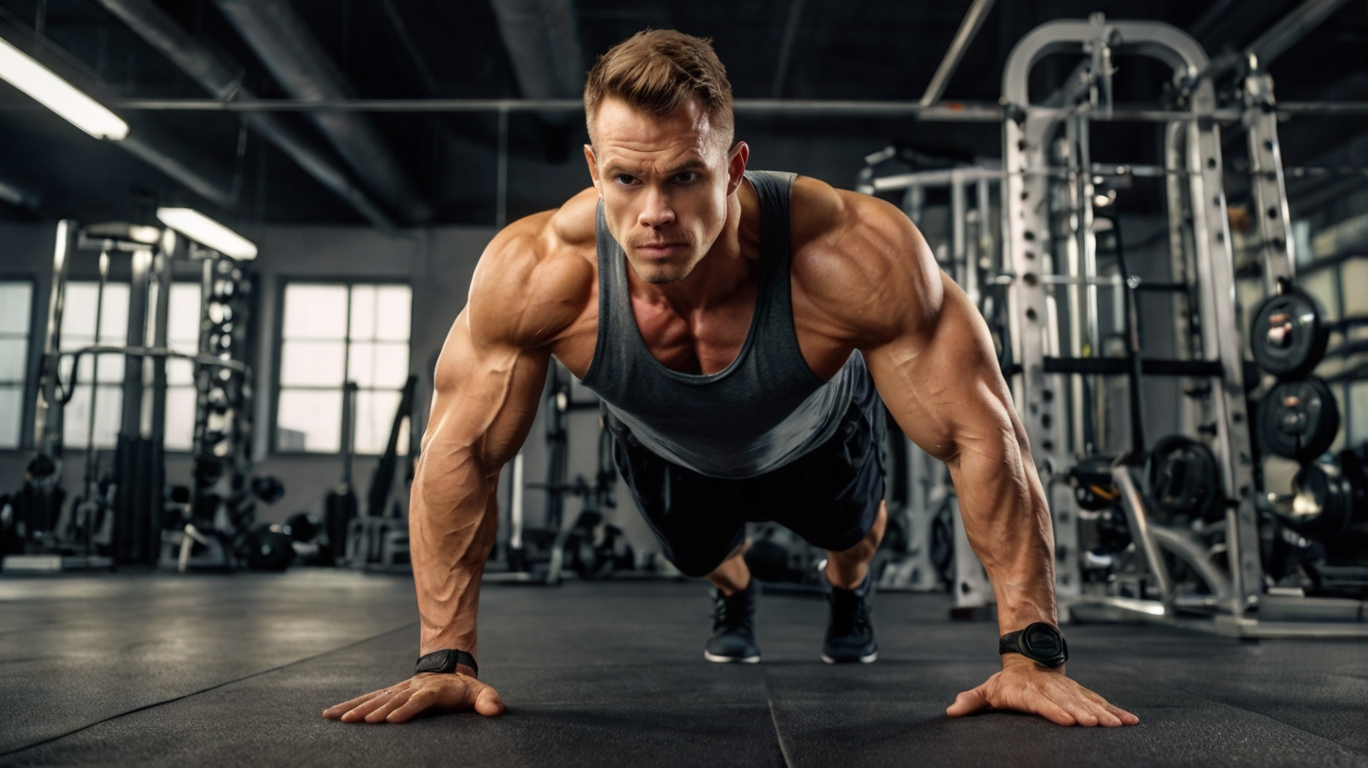Functional fitness exercises
Functional Fitness Exercises: Enhance Your Strength and Mobility
In today’s fast-paced world, maintaining physical fitness is essential for overall health and well-being. Functional fitness exercises are a key component of any effective workout program, focusing on movements that mimic everyday activities. This article explores the benefits, types, and ways to incorporate functional fitness into your routine, helping you enhance strength, mobility, and overall quality of life.
What Are Functional Fitness Exercises?
Functional fitness exercises are movements that engage multiple muscle groups and mimic the way you move in daily life. Unlike traditional workouts that isolate specific muscles, functional fitness focuses on improving strength, balance, flexibility, and coordination. This approach enhances your ability to perform daily tasks more efficiently and reduces the risk of injury.
Benefits of Functional Fitness Exercises

- Improved Strength and Stability
- Functional exercises target multiple muscle groups, leading to enhanced overall strength and stability. This is particularly beneficial for activities like lifting, carrying, or balancing.
- Enhanced Mobility and Flexibility
- These exercises promote joint flexibility and range of motion, making everyday activities easier. Improved mobility can also help reduce the risk of falls, especially in older adults.
- Better Balance and Coordination
- Functional fitness training incorporates balance exercises, which help improve coordination and stability, crucial for performing daily tasks safely.
- Injury Prevention
- By strengthening the muscles used in everyday activities, functional fitness helps reduce the risk of injury both during workouts and daily life.
- Increased Cardiovascular Endurance
- Many functional exercises, like circuit training, elevate your heart rate, contributing to cardiovascular health and endurance.
- Time Efficiency
- Functional fitness workouts often combine strength, balance, and endurance training in one session, allowing for a comprehensive workout in a shorter amount of time.
Types of Functional Fitness Exercises
Functional fitness exercises can be categorized into several types, each targeting different aspects of physical fitness:
1. Bodyweight Exercises
These exercises use your body weight for resistance and are highly effective for building strength and stability.
- Examples:
- Squats: Engage the quads, hamstrings, and glutes.
- Push-ups: Target the chest, shoulders, and triceps.
- Lunges: Work on leg strength and stability.
- Planks: Strengthen the core and improve stability.
2. Resistance Training
Using weights or resistance bands can further enhance the effectiveness of functional exercises.
- Examples:
- Deadlifts: Target multiple muscle groups, enhancing overall strength.
- Dumbbell Shoulder Press: Builds upper body strength while engaging the core.
- Kettlebell Swings: Improve power, endurance, and coordination.
- Resistance Band Rows: Enhance upper back and arm strength.
3. Balance Training
Incorporating balance exercises improves stability and coordination.
- Examples:
- Single-Leg Stands: Improves stability and strength in one leg.
- Bosu Ball Squats: Engage core muscles while challenging balance.
- Stability Ball Exercises: Enhance core strength and balance.
- Balance Board Exercises: Improve proprioception and coordination.
4. Core Strengthening

A strong core is essential for functional movements and overall stability.
- Examples:
- Medicine Ball Twists: Strengthen the obliques and core muscles.
- Hanging Leg Raises: Target lower abdominal muscles.
- Russian Twists: Enhance rotational strength and stability.
- Bird-Dog Exercise: Improves core stability and coordination.
5. Cardiovascular Conditioning
Functional fitness often includes high-intensity cardio workouts that mimic daily activities.
- Examples:
- Jumping Jacks: A full-body exercise that improves cardiovascular endurance.
- Burpees: Combine strength and cardio for a full-body workout.
- High Knees: Engage the core and improve cardiovascular fitness.
- Mountain Climbers: Build strength and endurance while engaging the core.
How to Incorporate Functional Fitness Exercises into Your Routine
Incorporating functional fitness into your workout routine can be easy and effective. Here are some steps to get started:
1. Assess Your Fitness Level
Before starting any new exercise program, evaluate your current fitness level and consult with a fitness professional if needed.
2. Set Clear Goals
Determine what you want to achieve through functional fitness, such as improving strength, flexibility, or overall endurance.
3. Create a Balanced Workout Plan
Design a workout plan that includes a mix of functional exercises targeting different muscle groups. Aim for at least 2-3 sessions per week.
Sample Functional Fitness Workout Plan
- Warm-Up: 5-10 minutes of dynamic stretches or light cardio
- Workout:
- Squats: 3 sets of 10-12 reps
- Push-Ups: 3 sets of 8-10 reps
- Lunges: 3 sets of 10 reps per leg
- Plank: 3 sets of 30 seconds
- Kettlebell Swings: 3 sets of 12-15 reps
- Cool Down: 5-10 minutes of static stretching focusing on major muscle groups
4. Focus on Form
Proper technique is crucial to maximize effectiveness and prevent injury. If you’re unsure about your form, consider working with a personal trainer.
5. Stay Consistent
Consistency is key to seeing improvements in functional fitness. Make it a habit to include functional exercises in your weekly routine.
6. Track Your Progress
Keep a workout log to track your exercises, sets, and reps. This can help you stay motivated and make necessary adjustments.
Progressing Your Functional Fitness Routine
To continue seeing improvements, it’s essential to progress your workouts over time. Here are some ways to do that:
1. Increase Resistance
As you become stronger, gradually increase the weight or resistance you use for exercises.
2. Add Variations
Incorporate variations of standard exercises to challenge your muscles in new ways. For example, try sumo squats instead of regular squats or incline push-ups instead of standard push-ups.
3. Increase Reps and Sets
Gradually increase the number of repetitions and sets for each exercise to build endurance and strength.
4. Incorporate New Movements
Introduce new functional movements that challenge your stability and coordination, such as Turkish get-ups or bear crawls.
5. Focus on Time Under Tension
For strength-building exercises, slow down your repetitions to increase the time your muscles are under tension, leading to greater strength gains.
6. Cross-Train
Include other forms of exercise, such as yoga, Pilates, or martial arts, to enhance overall fitness and prevent boredom.
Common Mistakes to Avoid

To maximize the benefits of functional fitness exercises, be aware of these common mistakes:
- Neglecting Core Strength
- Always prioritize core exercises, as a strong core is crucial for functional movements.
- Using Poor Form
- Focus on maintaining proper form to prevent injuries and ensure you’re working the correct muscles.
- Skipping Warm-Up and Cool Down
- Always include warm-up and cool-down sessions to prepare your body for exercise and aid recovery.
- Ignoring Flexibility
- Incorporate stretching or yoga to enhance flexibility, which is vital for functional movements.
- Not Listening to Your Body
- Pay attention to how your body feels during workouts. Rest or modify exercises if you experience pain or discomfort.
Conclusion
Functional fitness exercises offer numerous benefits, enhancing your strength, mobility, and overall health. By incorporating a variety of exercises that mimic daily activities, you can improve your physical performance and reduce the risk of injury. Start integrating functional fitness into your routine today and experience the positive impact on your daily life.






